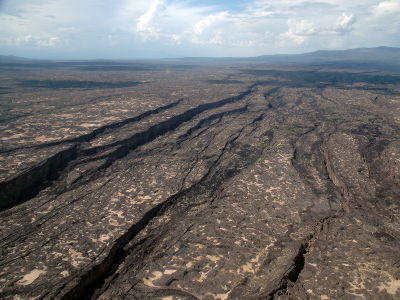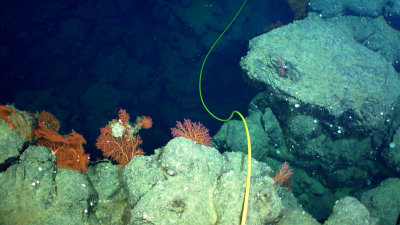Technology to monitor everything from volcanoes and earthquakes to singing voices of whales with 'optical fiber'

When it comes to optical fiber, many people have a strong image of infrastructure for Internet communication. Rather than using optical fibers as mere cables, research is underway to observe volcanic activity, crustal movements at the bottom of the sea, road traffic, whale songs, etc. by analyzing optical signals transmitted by optical fibers. increase.
Fiber optics take the pulse of the planet
One of the researchers conducting research on capturing natural phenomena with optical fibers is Andreas Fichtner, a seismologist at the Swiss Federal Institute of Technology Zurich. According to him, using this technology called Distributed Acoustic Measurement (DAS) , it is possible to sense various events as if you feel the heartbeat of the earth. Fichtner et al.'s research team is using this technology to monitor Grimsvotn in Iceland, a volcano that is in danger of erupting.
The mechanism of DAS is as follows. First, a short pulse of light is emitted from a laser source at one end of an optical fiber. Then, most of the light goes to the other end of the optical fiber, but some of it hits the impurities in the optical fiber and bounces back to the light source. When the optical fiber is deformed due to vibrations of the ground in which the optical fiber is embedded, the reflected light changes, and by analyzing this change, it is possible to detect earthquakes and the like.

Nathaniel J. Lindsey of Stanford University, one of the DAS researchers, said, 'For example, when a car runs, an earthquake occurs, or a crustal movement occurs, the optical fiber shakes. Such shaking causes the reflected light to change. Since the signal changes, we can obtain information such as which part of the cable is bent and how.'
This technology can detect tremors in units of 1 meter, so 10 km of optical fiber can be turned into 10,000 sensors. Similar technology includes seismometers, but each seismometer can only collect data from one location, and it is expensive to install and maintain.
DAS was originally developed by the petroleum industry for well monitoring and gas detection, but scientists are exploring ways to use the technology in a variety of applications. For example, it can be used not only for earthquake detection but also for geological surveys underground in cities, so it is possible to know which places are dangerous when a large earthquake occurs. In addition to being able to be used for monitoring traffic volume and construction noise in urban areas,
Despite the seemingly positive side of DAS, there are drawbacks. For example, it is difficult to obtain accurate data from optical fibers longer than 100 km, as signals become too weak when traveling too long to analyze the light reflected back from the cable.

In order to overcome this weakness, research is also underway to develop technology that enables sensing over longer distances by using continuous laser light instead of light pulses and comparing the transmitted and returned light. increase. In a 2018 study , a research team led by Giuseppe Mara of the National Institute of Physics in the United Kingdom used a laser to significantly update the conventional DAS limit of about 100 km, and earthquakes at a maximum of 535 km away. We have demonstrated that it is possible to detect
Research is also underway to clarify the actual state of the changing global environment. Fichtner et al.'s research team drilled a deep hole in the Greenland ice sheet, lowered the optical fiber to 1500 meters underground, and succeeded in observing icequakes that occur when the bedrock and the ice sheet rub against each other. If this technology is established, it will be possible to investigate the formation process of the ice sheet and the movement of glaciers toward the sea, which cannot be observed from above the glacier, revealing previously unknown mechanisms. It is hoped that it may become
Related Posts:
in Science, Posted by log1l_ks







